The Baiji dolphin, also called the “Goddess of the Yangtze”, is a Chinese endemic specie last seen in 2002. In 2007, ”The Royal Society” even declared this species as functionally extinct. To the great astonishment of many international organisations focusing on biodiversity conservation, the “China Biodiversity Conservation and Green Development Foundation” (CBCGDF), a leading Chinese NGO dedicated to biodiversity conservation and sustainable development for over three decades, convened a conference on 10 July 2018 to reveal and share evidence proving that some Baiji specimens may have survived. The event was organised by Dr. Jinfeng Zhou, Secretary General of CBCGDF, who hosted Mr. Donald Hobern, Oxford graduate and Executive Secretary and Director of the “Global Biodiversity Information Facility” (GBIF) and Associate Pr. Alice Hughes from the “Xishuangbanna Tropical Botanical Garden” (XTBG) of the “Chinese Academy of Sciences” (CAS), in Beijing. This platform was a great occasion for CBCGDF to introduce the highly successful “Community Conservation Areas” (CCAfa), a main CBCGDF project for the protection of biodiversity, and to expose pictures and scientific data of three Chinese endangered species : the Baiji dolphin, the Chinese pangolin and the great bustard.

At the conference, the second from left is Donald Hobern, the Executive Secretary of GBIF, and the first from right is Dr. Zhou Jinfeng, the SG of CBCGDF (Photo: CBCGDF)
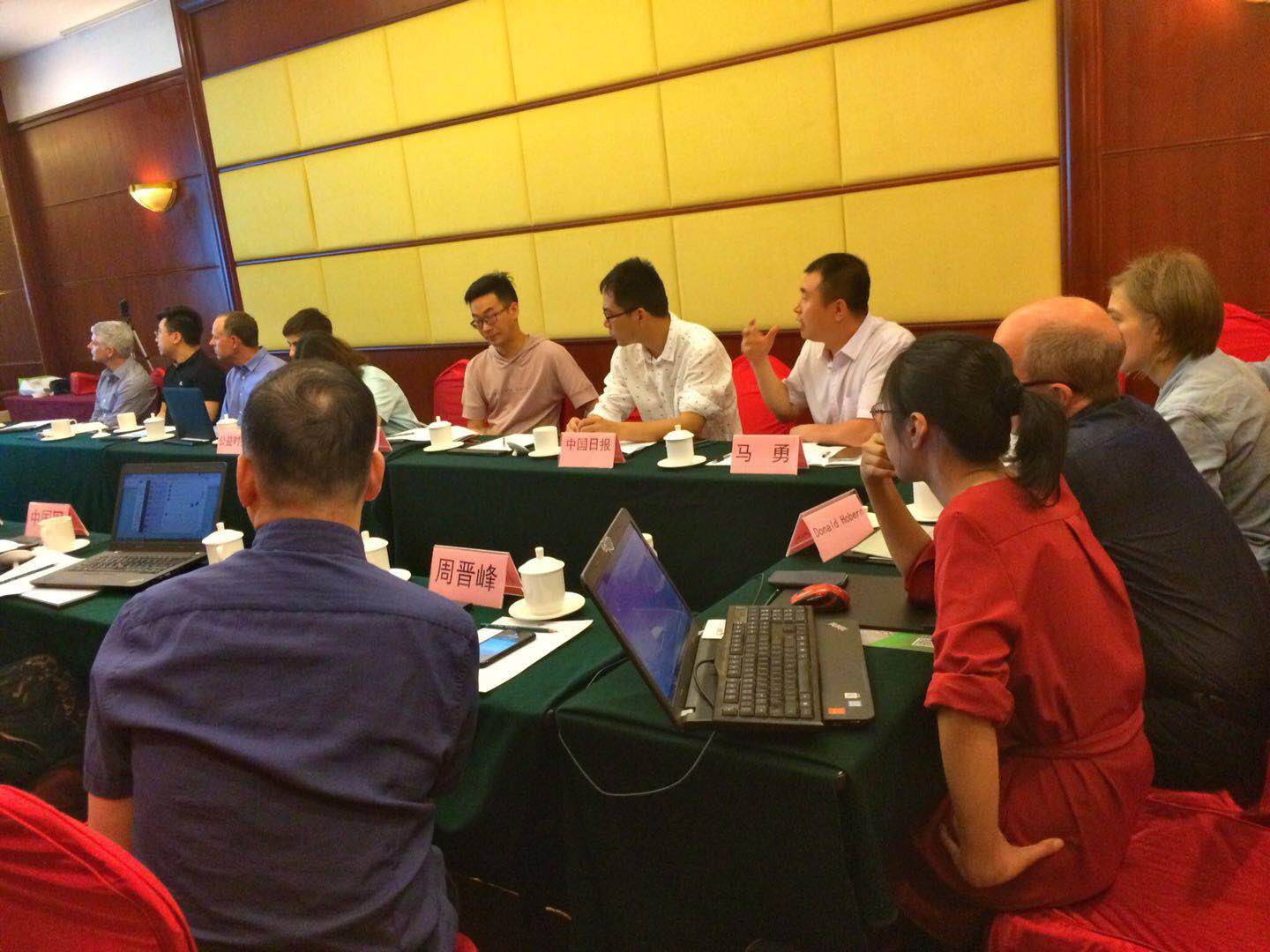
Conference site (Photo: CBCGDF)
Mr. Donald Hobern was the first to have the floor. Representing GBIF, he started to thank everyone for attending this platform and was delighted to meet enthusiastic colleagues dealing with common issues. GBIF is an international intergovernmental organisation established in 2001 whose purposes are to collect as much data about biological diversity as possible and to share it publicly via the internet. Recently, GBIF reached the staggering number of 1 billion records around the world allowing the public to better understand what biodiversity is. “This is a really exiting milestone for GBIF” asserted Mr. Hobern. It has been made possible only thanks to the contribution of international institutions, scientists and even members of the public, who have shared information. “It is a partnership between many countries that help to pay the costs of what we do, and here in China the Chinese Academy of Science is one of our key partners.”

At the conference, CBCGDF announced that it has been officially endorsed by Biodiversity Committee, the Chinese Academy of Sciences(CAS). And now it has become an official data publisher of GBIF. (Photo: CBCGDF)
Ms. Wang Jing from CBCGDF made a presentation on the Baiji dolphin (Lipotes vexillifer) conservation issue. Baiji dolphins are said to be functionally extinct and the last one ever pictured was a dolphin named “Qiqi” (淇淇). However, during the conference, a picture of a Baiji dolphin taken by CBCGDF, on April 18 2018, was shown. All the information concerning this specimen was previously submitted to the GBIF data system (www.inaturalist.org), updating the last ever recorded data on Baiji doplhins from 1921. Three years ago, CBCGDF started to undertake explorations in order to find out whether or not some Baiji dolphins specimens are still left in the wild. Moreover, a CCAfa conservation area was established in a Yangtze River area. In 2017, a scientific team lead by Dr. Jinfeng Zhou even witnessed the presence of a Baiji dolphin in a Yangtze River area, but unfortunately this brief moment was not captured. This year, however, a picture of a Baiji dolphin was taken by CBCGDF’s "Enterpriser Photography Nature Fund” and given to IUCN. Ms. Wang Jing concluded by saying that everybody is welcomed to provide data as CBCGDF “wants to continue the hope” and open a new chapter on species conservation.
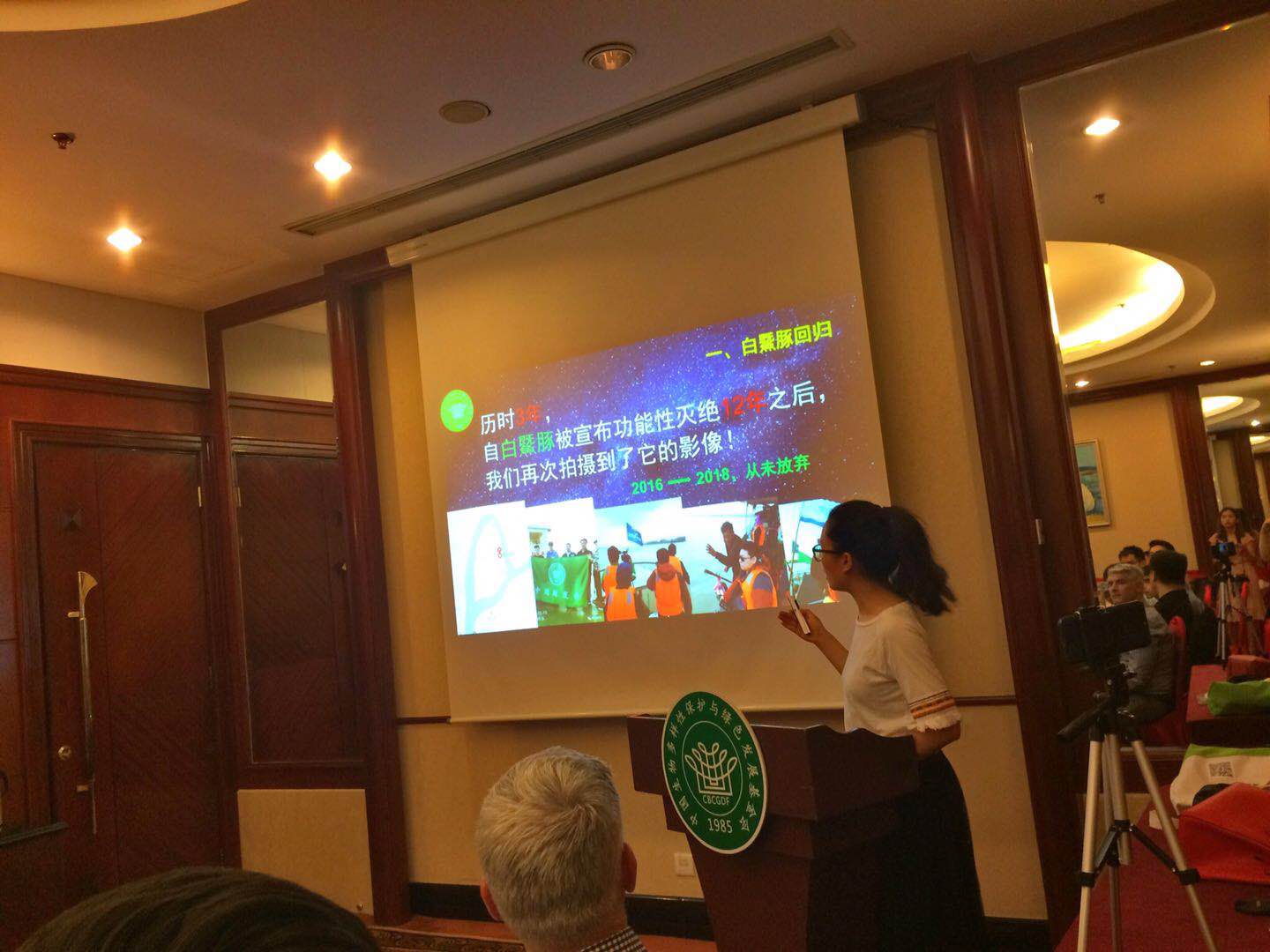
The introduction of the data entry on Baiji dolphin observed on April 18, 2018. (Photo: CBCGDF)
One of this new chapter’s aims is to protect Chinese pangolins (Manis pentadactyla). Ms. Sophia Zhang from CBCGDF shared with us a moving story. On the early morning of May 29 2018, two men in Ningdu County, Ganzhou, Jiangxi Province, discovered a wounded pangolin and directly reported it to local forest police. The Chinese pangolin is a critically endangered species which was once very common in the wild. Since the last 20 years, however, it has been nearly impossible to find wild specimens. “If we don’t protect it, it may soon become the first species of pangolins to disappear”, she said. After treatment, the Chinese pangolin was released back to the wild. With the hope of raising awareness about Chinese pangolins, CBCGDF also has submitted data about this species to GBIF. The data was entered 34 years after GBIF’s last recording of a Chinese pangolin. In memory of the 2002 Baiji dolphin, CBCGDF named the rescued pangolin “Qiqi” (奇奇), with the hope that Chinese pangolins will be luckier than Baiji dolphins, and that they will easily and safely breed in the wild. Ms. Zhang also wished to raise concern, from the public at home and abroad, about Chinese pangolins.
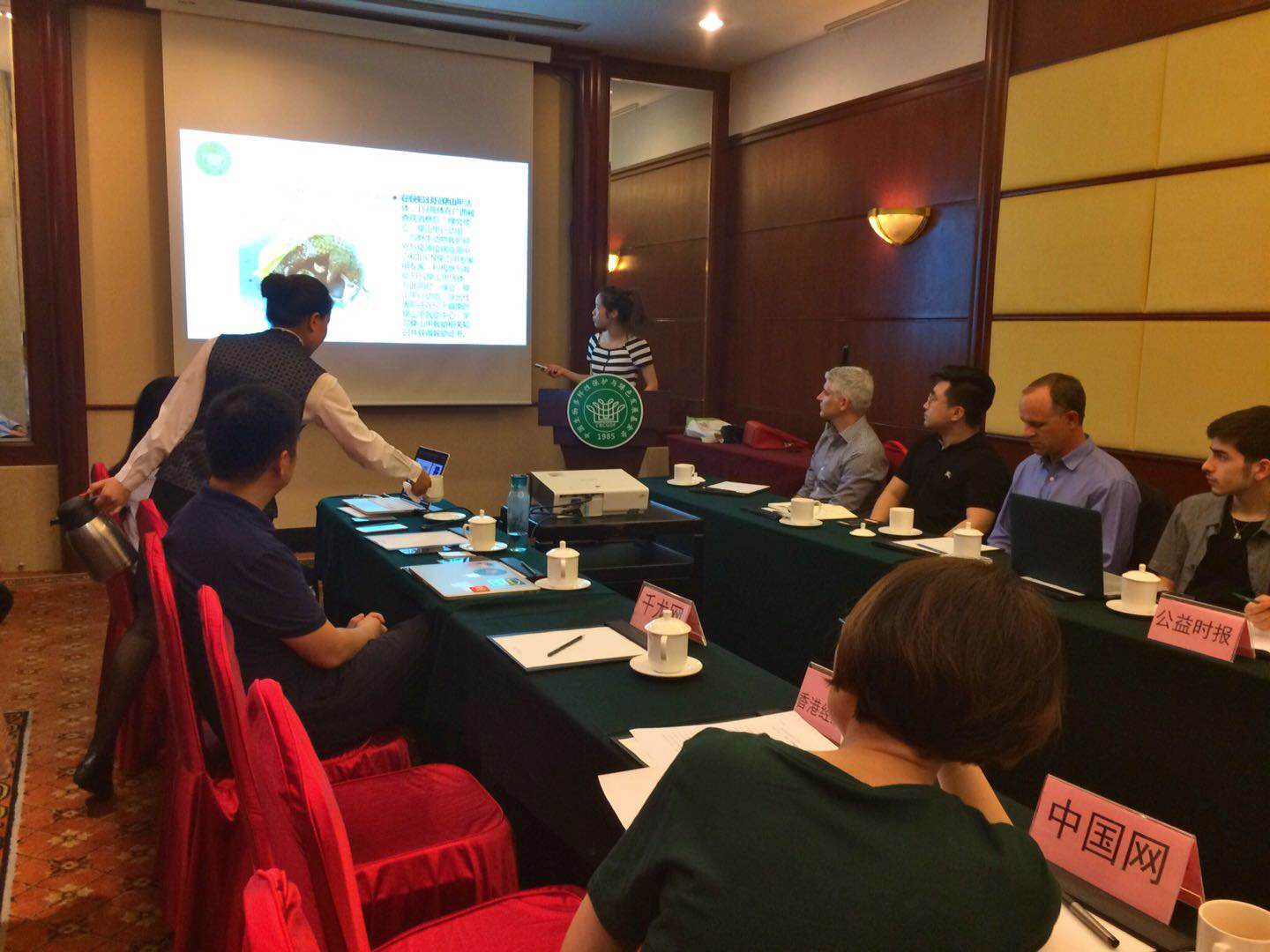
The introduction of the details of the data entry of the Chinese pangolin "Qiqi" (Photo: CBCGDF)

The rescued Chinese pangolin "Qiqi" (Photo: CBCGDF)
Later, Mr. Zhang Yong Fei from CBCGDF shared the latest data about great bustards in Hunan province, where another CCAfa site was established. CBCGDF is undertaking actions to preserve this endangered species. For example, CBCGDF volunteers distributed flyers to clarify the fact that hunting great bustards is forbidden. Volunteers also accomplished the very tough and time-consuming task of collecting poison baits scattered throughout the CCAfa area. The public can also participate to specific trainings teaching them how to efficiently protect great bustards. CBCGDF also relies on international cooperation with structures such as GBIF. Earlier this year, a CBCGDF project was launched to preserve great bustards: the “Citizen Scientist Project” of “In Search of Great Bustard in the New Year”. This project led to the recording of nearly 400 great bustards, which is immense knowing that there are no more than 10000 specimens left in the wild. CBCGDF is also planning to organise an “International Great Bustard Workshop” in November where experts, scholars, volunteers and scientists will be welcomed to participate.

The introduction of the details of anti-poaching of folk volunteers in the "In Search of Great Bustrad in the New Year" operation in the beginning of 2018. (Photo: CBCGDF)
At the end of the meeting, Ms. Alice C. Hughes talked about the work achieved by her group at the “Xishuangbanna Tropical Botanical Garden” (XTBG) of the “Chinese Academy of Sciences” (CAS). Ms. Hughes and her team advocate an intelligent approach on biodiversity protection in the landscape scale. She warmly thanked CBCGDF for helping XTBG to realise this goal. By using precise methods, it is possible to gain new insights on the conservation of species. Approaches involve the development and analysis of recent biodiversity databases (never older than 20 years). Indeed, Ms. Hughes said that great databases from Western organisations, such as GBIF and IUCN, lack recent data. 87% of the IUCN range boundaries are, in fact, political boundaries and therefore miss essential areas like the wide zone of the Yellow sea, she explained. Accurate data is key for accurate mapping and assessment of species conservation status. According to Ms. Hughes, the IUCN is misleading misinformed and not dynamic. “We can’t preserve an area and pretend to preserve species” she asserted. To efficiently prevent threats to biodiversity, we have to keep in mind that the environment is complex and variable. Factors, like endemism, need to be taken into consideration. She pointed out that some species of amphibians are endemic, which means that they are unique to a precise geographic location. On the contrary, it is also necessary to analyse the behaviour of nomad taxa across wild areas. Reproducing accurate representations of the physical environment can help showing hotspots for each taxon and if taxa are efficiently protected. Lastly, Ms. Hughes agreed with Mr. Hobern on the fact that letting the public upload data, besides updating existing data, helps to foster a sense of biodiversity conservation in the world’s major context of industry development.
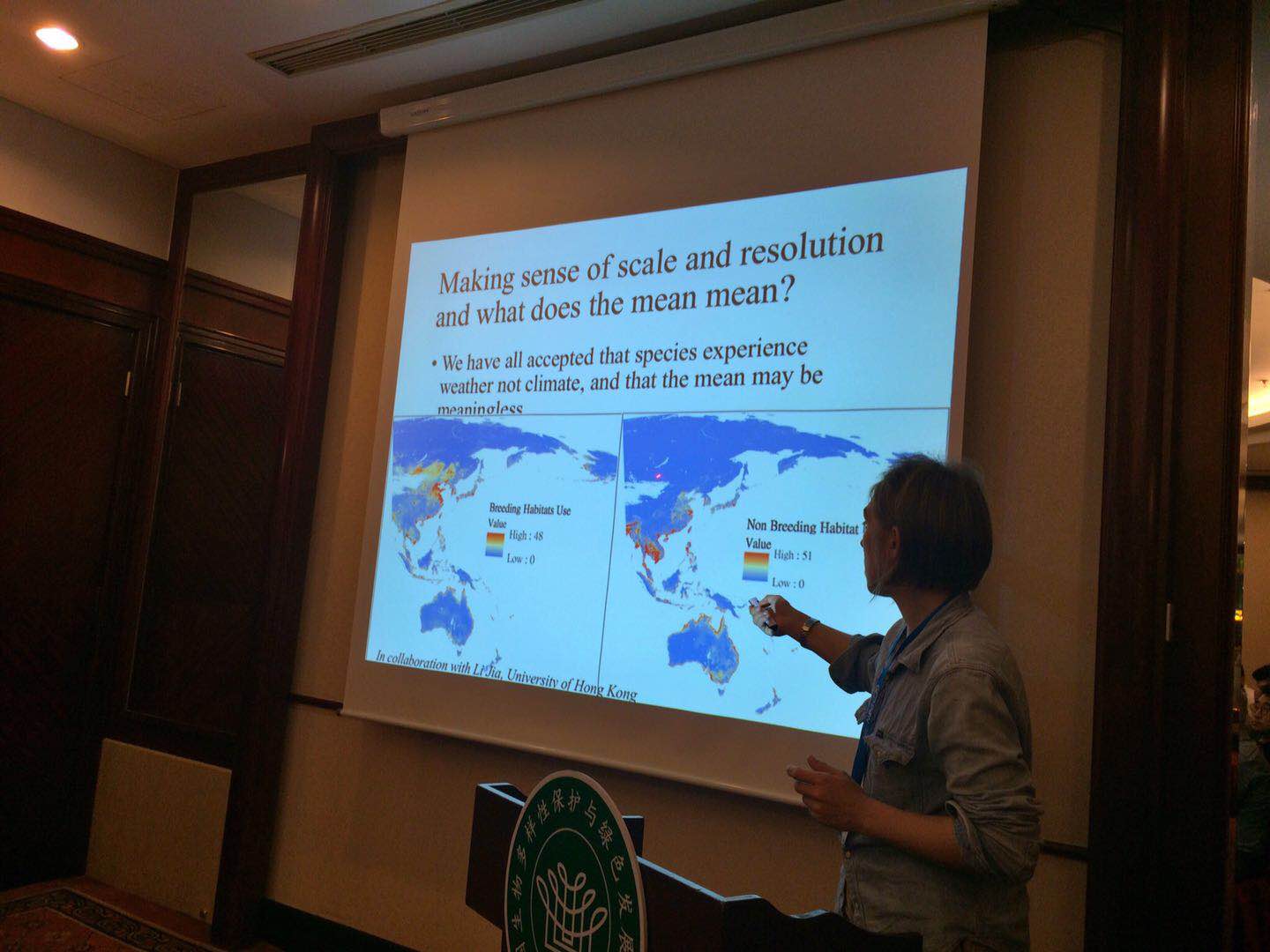
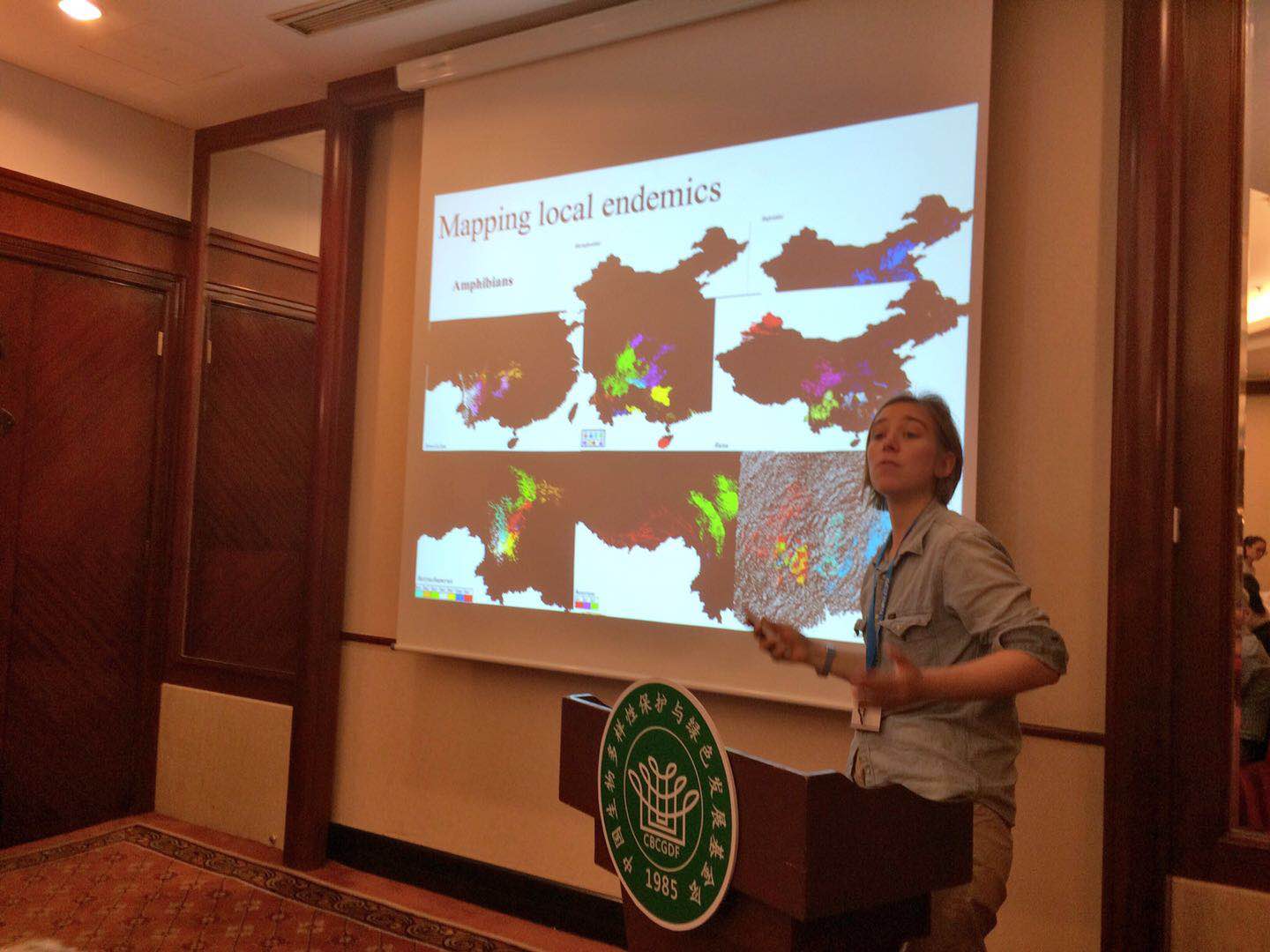
Ms. Hughes at the conference (Photo: CBCGDF)
It seems obvious that, nowadays, environmental non-government organizations (NGOs) play an important role in environmental protection around the world. Particularly, thanks to CBCGDF and its partners, the Chinese government and its people are becoming aware of the crucial part they need to play in ecological conservation. To preserve its natural resources and diversity, CBCGDF will continue to share its resources and knowledge and encourage more participation from environmental NGOs and the public with the aim to shape a better, safer and cleaner future for all living beings.

GBIF fixed its homepage as "Qiqi" to congratulate CBCGDF on the successful entry of Chinese pangolin data (Photo: www.gbif.org)
By/ Eddy Mayar Ariss
